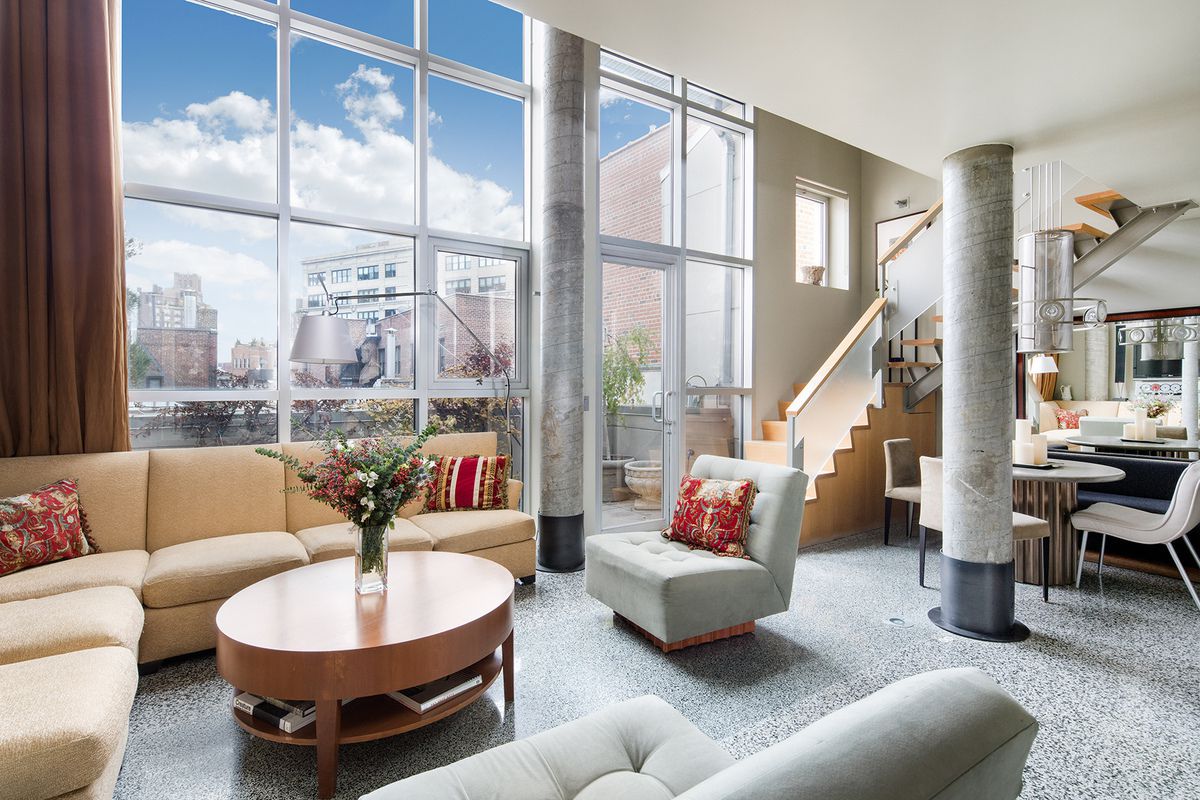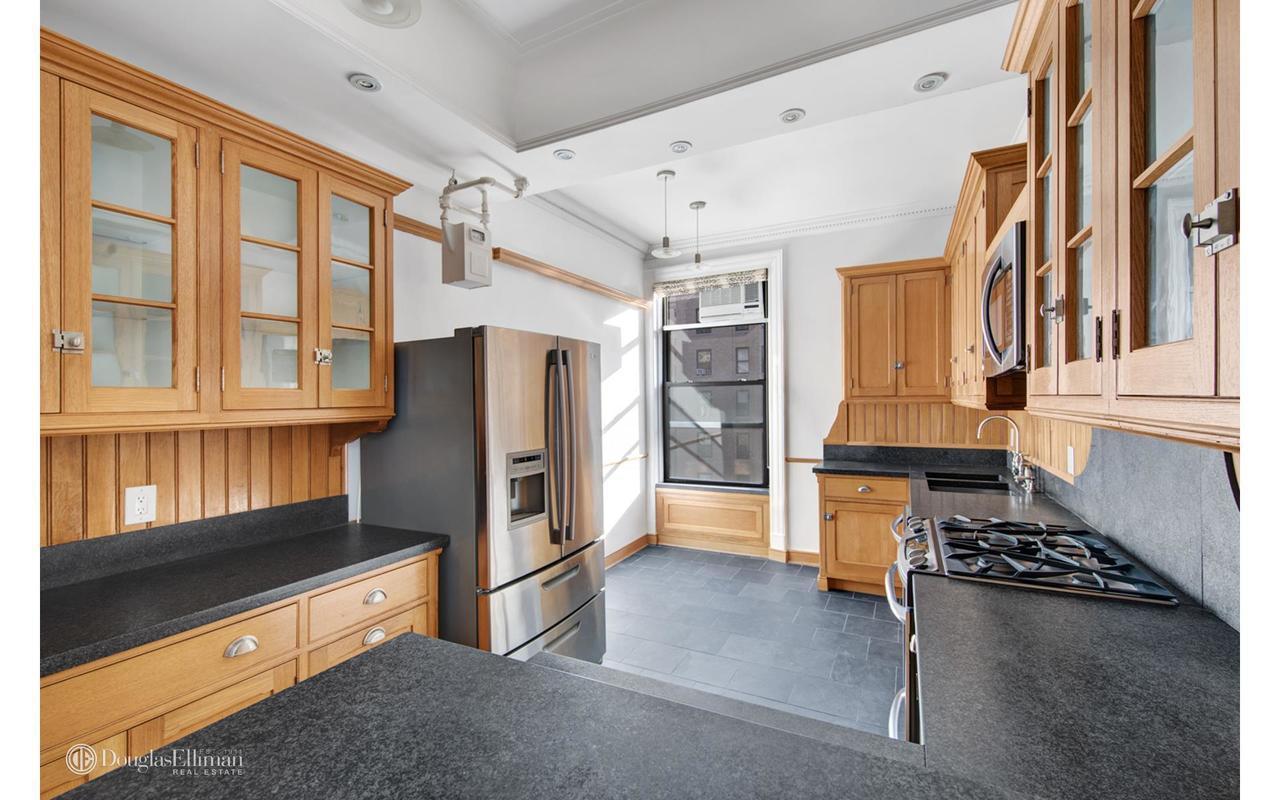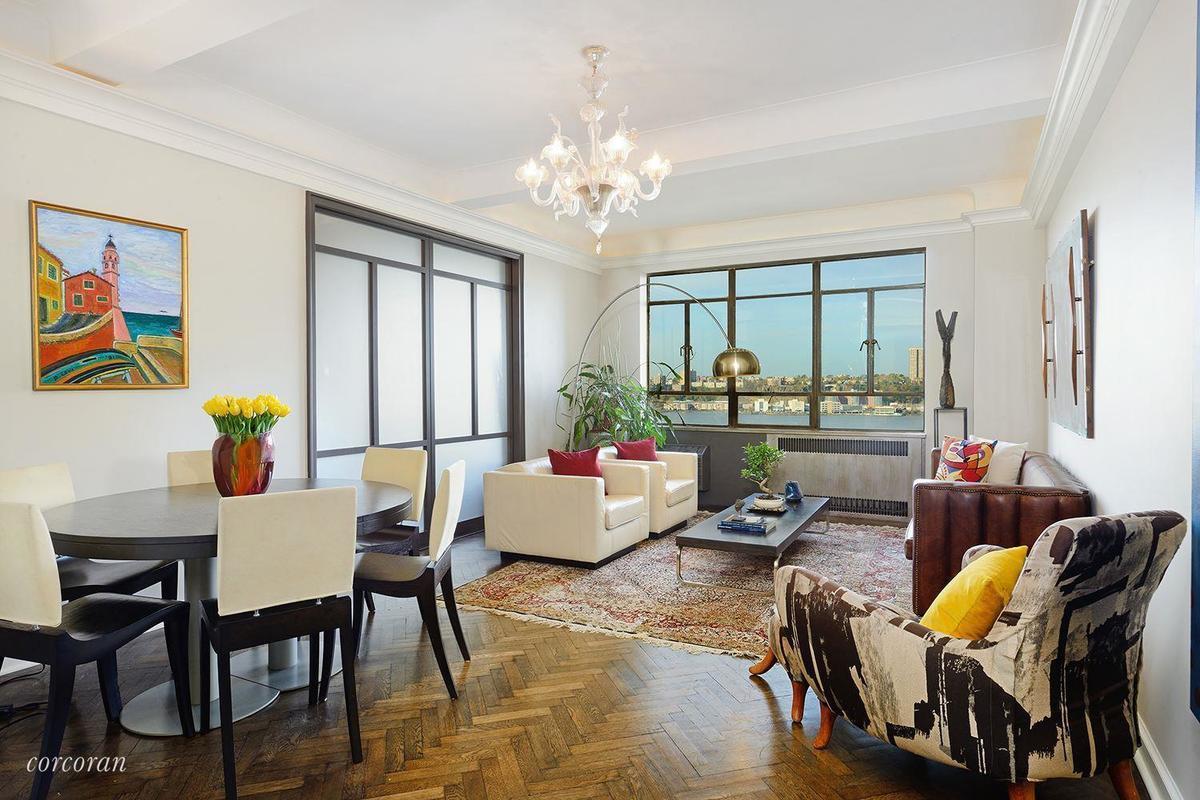
Tile floors can make a striking, low-maintenance alternative to wood. (From a StreetEasy listing)
New York’s buildings are as diverse as the people who inhabit them, but when it comes to interior design, it often feels like when you’ve seen one, you’ve seen them all. Open kitchens, stainless steel appliances, and wide-plank flooring are almost ubiquitous in design-focused homes these days. But design trends, like most things in New York, are always changing. We spoke with a few top real estate brokers for their thoughts on what new design elements clients are going for, and which are growing as dated as a pair of acid wash jeans.
Tile Is Making a Comeback
While hardwood floors still hold some appeal, Virginia Hildebrandt of NYC-based real estate and relocation firm DJK says that tile floors are becoming increasingly popular with buyers who aren’t eager to take on a refinishing project every few years. “[One] popular approach is to use wide-plank ceramic tile flooring to simulate wood floors,” she says. “Ceramic tile is more durable and easier to clean.” David Maundrell, executive vice president of new development at Citi Habitats, agrees about tile’s triumphant return. “Like with all things, real estate recycles design ideas. We are currently seeing a lot of recycled trends in tile, including subway tile, penny tile and hexagon tiles.”
Wide-Plank or Bust
Thin is no longer in — at least when flooring is concerned. “It’s funny: For the longest time we saw thin, light-stained wood planks around Manhattan,” says Andrew Sandholm, an agent at BOND New York. “But now, it seems new developments and design trends in general favor medium- to dark-stained wide planks. Big and bold. It’s a complete 360 from what we’ve seen in years past, but that’s fashion for you.” David Maundrell also notes that herringbone-patterned floors are similarly picking up steam.
Open Floor Plans Aren’t Going Anywhere
If you love some privacy in the kitchen, you might have to find it outside of the city: According to Sandholm, open floor plans are sticking around. “The open floor plan really doesn’t make sense in Manhattan given the lifestyle of most New Yorkers. There are roughly 10,000 restaurants in Manhattan alone. Few New Yorkers cook. Manhattanites choose to visit and entertain their friends and family outside of the home,” he says. “Still, open floor plans are here to stay in Manhattan, because they’re less costly for a developer to build.”

There are benefits to the storage and control of a traditional, closed-in kitchen. (From a StreetEasy listing)
Yet cost isn’t the only factor in the appeal of the open concept. David McDaniel, an agent with Bohemia Realty Group in Manhattan, says that open layouts give homes a spacious feel, even when actual space is at a premium. “In New York, I think open floor plans just make sense,” he says. “When done right, they can maximize usable square footage in a small space.” McDaniel predicts that some luxury buildings may even offer a choice of open or closed kitchens into their customization packages in the near future, now that the latter is once again in vogue. “Hopefully buildings will offer closed or open versions, so clients can get the layout that best fits their lifestyle,” he says.
Recessed Lighting Is Tired
“A chandelier can completely change a room,” says Sandholm. “You can take an otherwise old, tired apartment and transform it into a very sexy space with a chandelier. There are many different types of chandeliers — ranging from the classic to the modern — but a chandelier speaks to people in a way that no other type of lighting does.” Maundrell adds that newer developments are shying away from the traditional tin can recessed lights and track lighting: “[It’s a] new construction trend to only do outlets,” he says. However, the practicality of an exclusively lamp-lit home is often called into question. “We encourage clients to do overhead lighting in bedrooms and dining rooms,” he says.
Keep It Easy
After an 80-hour workweek, who has the time to polish appliances? Sandholm, Hildebrandt, and Maundrell all agree that, more than ever, clients are seeking a low-maintenance lifestyle, which may mean veering away from stainless steel appliances. “I don’t foresee stainless steel appliances remaining a trend, because they are hard to clean and hey, you can’t put magnets on them,” Sandholm says. “Then again, if you search online or visit a home appliance store, that’s really all they sell these days. So I think we’ll continue to see stainless steel appliances not by choice, but because that’s what’s being produced and available for those in the market for new kitchen appliances.”

A dramatic chandelier and herringbone floors are both classic details that won’t go out of style anytime soon. (From a StreetEasy listing)
Classic Details Aren’t Going Out of Style
While many new buildings are going for an ultramodern look, Hildebrandt says that classic details, like elegant moldings, are still enticing buyers. Maundrell notes that buyers are also drawing inspiration from previous decades when it comes to cabinetry, with Shaker styles in particular making a major comeback.
But Digital Upgrades Are the Future
Both Maundrell and Sandholm agree that keyless entry is the next big trend to look for. “The physical metal house key will become obsolete in 10 years,” says Sandholm. “The death knell is ringing for the traditional metal house key, as biometric authentication will prove to be a more secure way to lock up your home. Fingerprint, retina scans and facial recognition will be used to enter your home instead of a physical metal key. You can’t go to the corner store and make a copy of your fingerprint. It will be a safer, more reliable way to protect our homes.”
—
Hey, why not like StreetEasy on Facebook and follow @streeteasy on Instagram?
Related:









